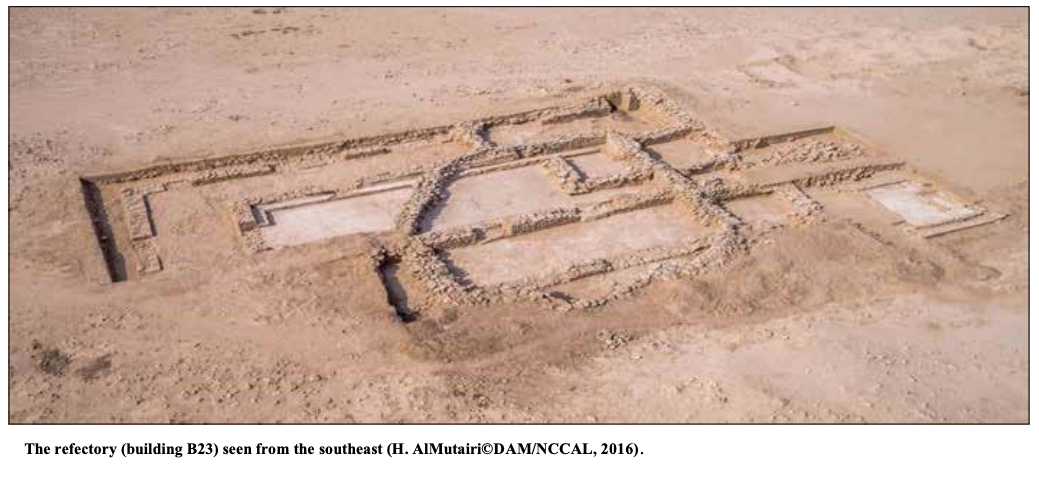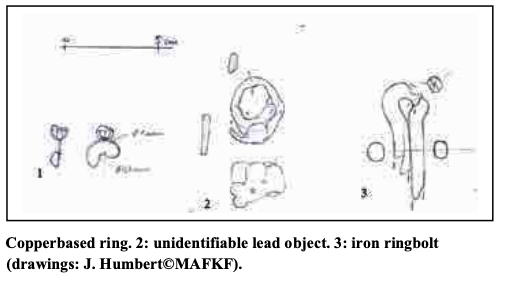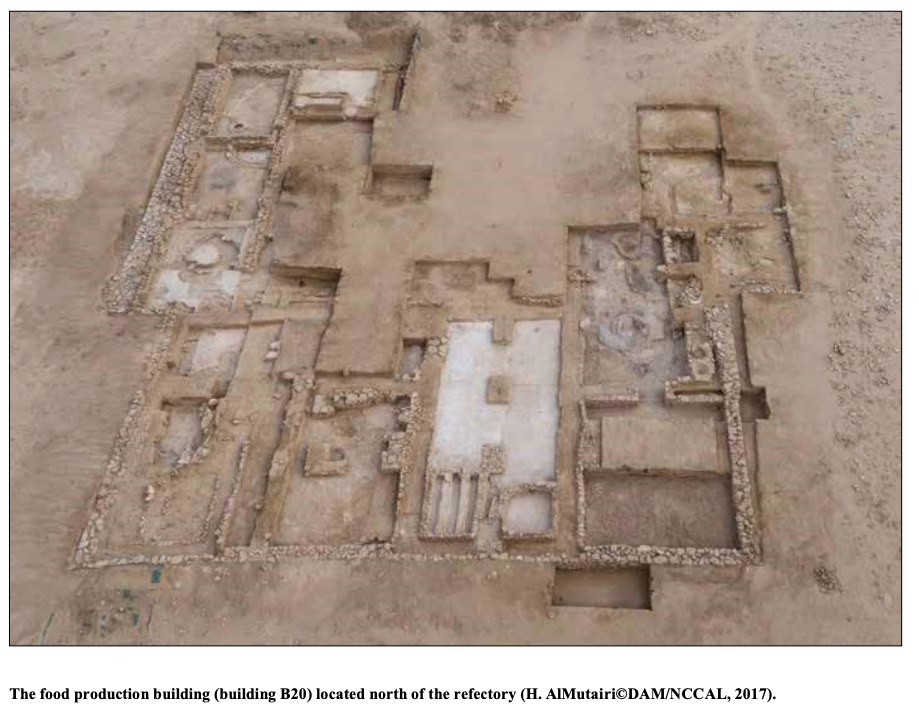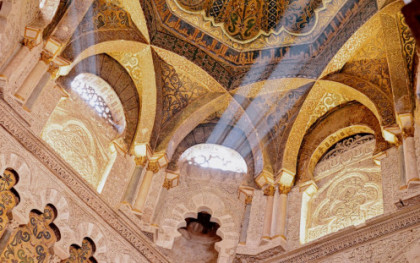The monastic settlement of al-Qusur was located in the middle of Failaka Island over a vast area (2,80 x 1,60 km). Its dense centre was composed of two churches and many buildings, including a refectory and a food production building. Surrounding this area, many enclosed houses of different sizes are scattered. The chronology of the settlement is currently estimated to date to a period from the 7th century to the 9th century CE. The excavations of the French-Kuwaiti Archaeological Mission in Failaka (MAFKF) focused on the centre of the site. The discovery of different metal objects during the 2011–2017 campaigns and the limited publications on this subject have made it necessary for us to carry out a complete and more detailed analysis of these artefacts. The comprehensive metal materials study, thanks to the British Foundation for the Study of Arabia, will be published with the results of the excavations in Al-Qusur, a Christian settlement from Early Islam of Kuwait Bay, vol. 1. Final publication from the French-Kuwaiti Archaeological Mission in Failaka (2011– 2018). Since this work is in progress, we will present here our initial results and observations.
Corpus and state of preservation
The metal materials under consideration here were unearthed during the 2011–2017 campaigns of the French-Kuwaiti Archaeological Mission in Failaka (supervised by Dr. J. Bonnéric) and are an important part of the corpus. The finds from 1988–1989, which disappeared during the war, are only known through drawings, but materials from the 2007– 2009 excavations will be studied during a second phase. The majority of the items were poorly preserved; the particular environment of the island with the combined action of sand and salt explains this significant corrosion. About 110 metal finds were discovered during the excavations conducted by the MAFKF. Almost all of them are made of iron. Only twelve pieces were made of a copperbased alloy (including five coins, studied by Dr. H. AlMutairi), six were fabricated in lead, and one was a small piece of slag.
Contexts of discovery
The metal materials studied come primarily from five buildings located north and west of the two churches, mainly from the refectory (figure 1) and the food production building (figure 2), whereas some objects were found on the ground surface during the mapping done by J. Humbert of the whole site. Unfortunately, these items cannot be precisely situated chronologically. Among them, one copperbased alloy ring with an empty bezel was found (figure 3-1). This kind of item has been known since antiquity and is also known in the Early Islamic period (Allan 1982: 68-69). Some finds correspond to a later occupation of the site and the construction of a modern sheepfold (building B10) erected above the refectory. Only four iron objects (two nails, one rod, and one circular shank of a tool or an object) were found in the layers associated with or subsequent to this Late Islamic structure, but they could also be residual elements from the medieval occupation.

Objects from the medieval settlement
In buildings B15 and B16, interpreted as houses, only six items were found, including one iron ring and one iron shank with a circular section that could be a needle or an awl. In contrast, the majority of the materials were discovered in the refectory (building B23). Forty-five items were discovered in this edifice. Among them, we should draw attention to a single copper-based alloy piece: a simple open ring that is crushed. Three objects made of lead were also found in this building, two plates and one coiled band (figure 3-2) that has no parallel for now (it is uncertain whether it is a collar, a reinforcement, waste, a reused object, etc.). The other discoveries belong to the hardware category: these are mainly iron nails, rivet-nails, ringbolts (figure 3-3), and some flat elements that suggest hinges. In the refectory, the very restricted distribution of the metal finds, in close proximity to the internal openings of the building, and their nature (hardware) indicate that they correspond to doors components.
About forty objects, more diversified, come from the food production building (building B20): three (maybe four) coins, a small copper-based alloy ring, and one lead netweight were discovered in this edifice. Some objects remain unidentifiable due to their poor preservation, but the iron hardware is still predominant, with nails, ringbolts, and some tips. In fact, most of these pieces come from architectural contexts and craft structures, as for example the items discovered in tannurs or in households in the west part of the building.

This initial study of metal finds at al Qusur allows us to discuss the usage of the metal materials in the monastic settlement during the Early Islamic period. There were a number of metal finds discovered during the excavations conducted by the MAFKF. Most come from the two major buildings, that is to say, the refectory and the food production building. Even if some items are linked to daily life, most of them are related to the architecture and the construction of the buildings and the interior fittings. For now, there were no cooking utensils, for example, as we would have expected in a food production building (but a lot of stone tools were found), and domestic and economic activities were represented by only a few objects (a needle, a netweight, slag and the ornaments) discovered in buildings B16, B20 and in outdoor areas, between the edifices. This lack of metallic artefacts from daily life could indicate the use of objects made of perishable materials or the recovery of materials when the site was abandoned. Initial results are promising, and to complete this study before publication, we still need to carry out some bibliographic research to look for accurate comparisons and to refine our analysis of the assemblages and their associated contexts. We can also state there is no trace of ground ores or local metal manufacture in Failaka; therefore composition analyses should also be conducted to understand the provenance and supply of these materials to the al-Qusur settlement.
References Allan J.W., 1982, Nishapur: metalwork of the early Islamic period. New York: Metropolitan Museum of Art.




